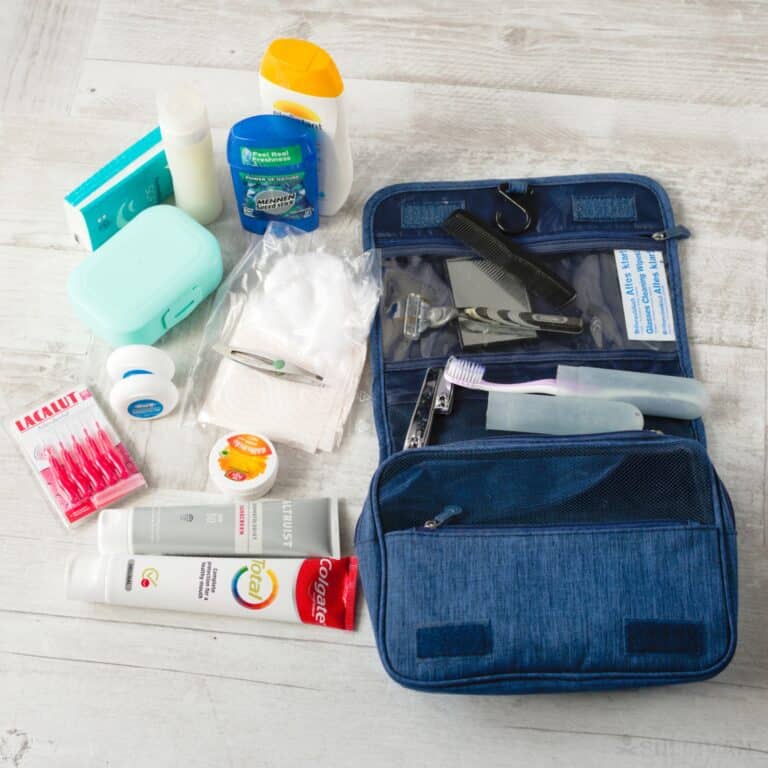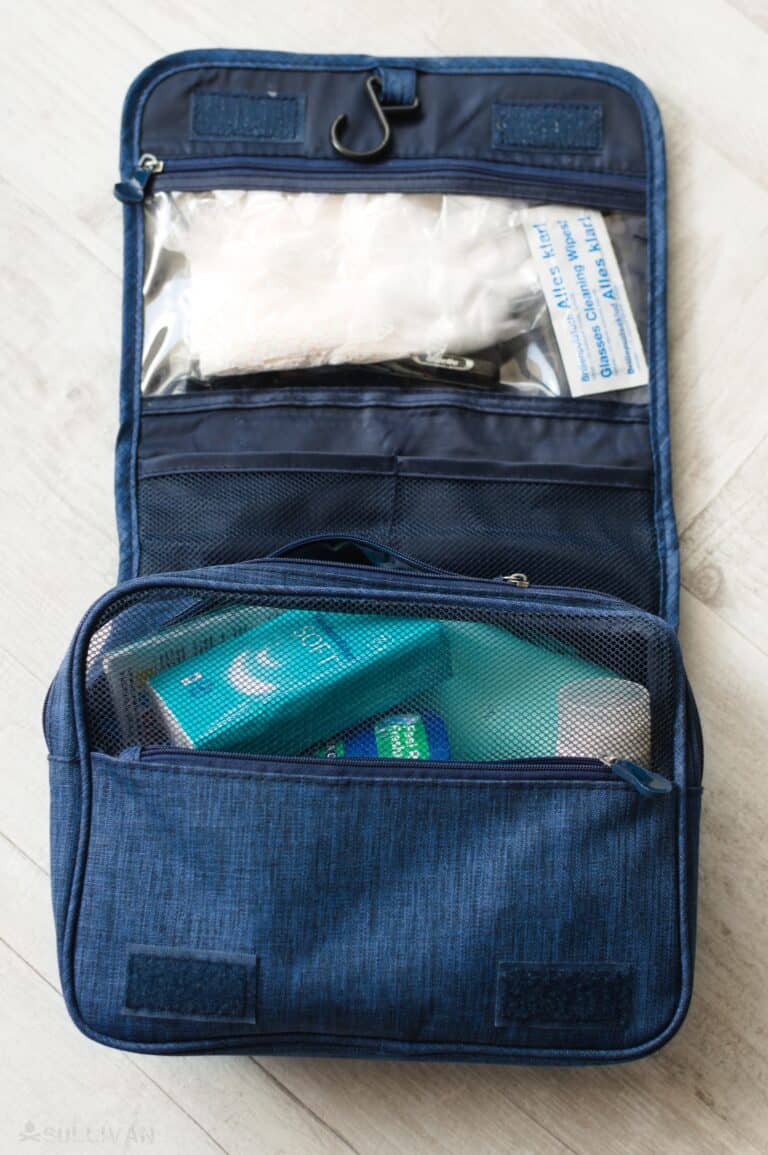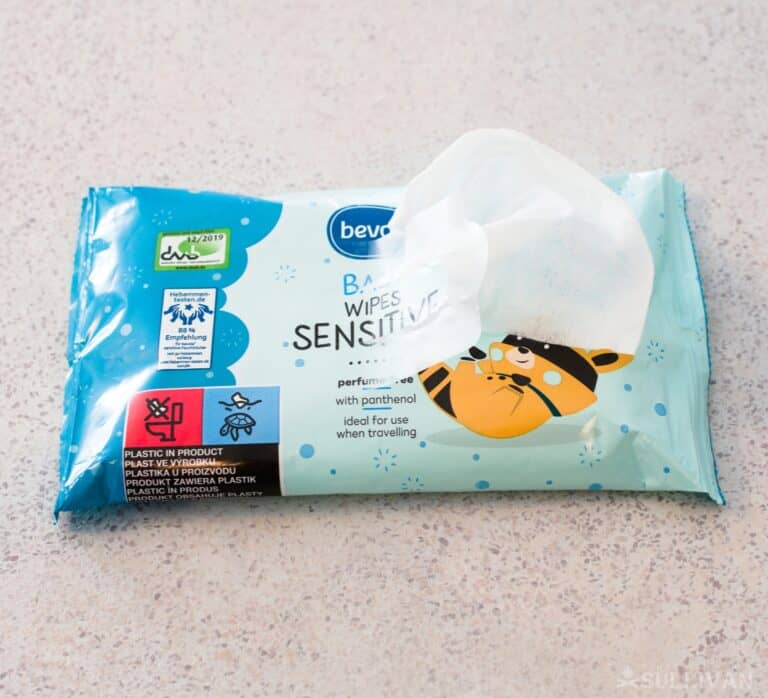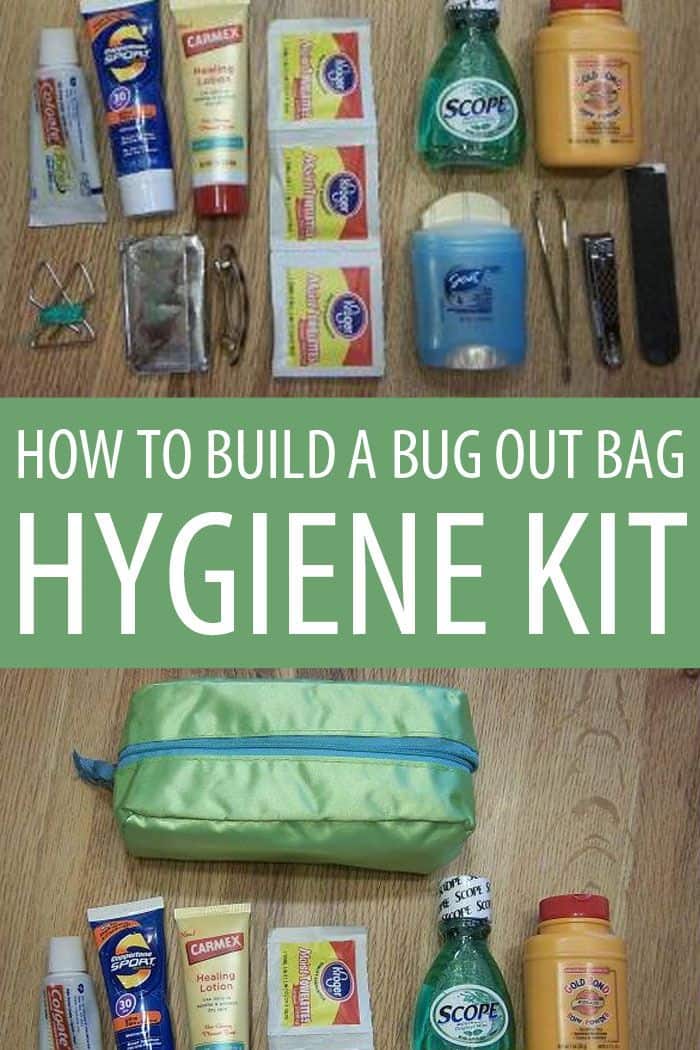A huge mistake that many preppers make in regards to packing a bug out bag is neglecting personal hygiene products. It’s perfectly understandable why someone would focus on items that seem more pressing, such as water, and food.
Those are all obviously critical to survival, but personal hygiene is something that you absolutely cannot neglect.

Sanitation standards are going to be dramatically lower in a prepping or survival situation than they are now. The streets will be filthy and littered with trash. Water will be contaminated as a result of a lack of human waste management. Disease will be spreading like wildfire, rapidly infecting entire communities of people.
To make matters worse, you’ll be in a bug out situation, away from home, with limited supplies.
The point of this is that you need to be prepared by including proper personal hygiene products in your bug out bag if you want your chances of survival to increase. The good news is that hygiene products are available all around us, so you shouldn’t feel too overwhelmed at all at having to stockpile them.
What’s better, is that most personal hygiene items can be purchased in bulk. This means that not only can you buy plenty for your bug out bag, but that you can buy an entire stockpile of them as part of your survival storage as well, and rotate them out on a regular basis.
If you can build a large enough stockpile, you should have no shortage of personal hygiene items for when disaster strikes.
The List
Let’s go over some of the most important hygiene items that you can carry in your bug out bag and that you should also stockpile in your overall survival preparations:
Soap
All that soap is, in its most basic form, is a fatty acid salt that emulsifies (or suspends) oils, dirt, and grime to allow them to be carried away by water. This is how rubbing your hands with soap and then rinsing under warm water makes your hands clean.
Keeping your hands clean in a survival situation, especially prior to eating, will be vitally important due to the decrease in sanitation standards. This is why including soap in your bug out bag is important.
While you can make your own soap in a survival situation with little more than water, ashes, and animal fat, it will be far more convenient to simply store at least one or two bars of soap in your bug out bag and additional quantities in your survival stockpile.
Soap is important in a survival situation for more things than just keeping your hands clean. You can use it to lubricate screws or saw blades or to keep your fingernails clean.
It can be used as an insect repellent in your survival garden, to relieve the pain from bug bites, to remove stains from fabric, and more importantly, to clean woulds.
This is one of the reasons backpacking first aid should be done with the hygiene kit in mind, because you don’t want to carry too much soap.
Baking Soda
Baking soda is a survival miracle because you can make virtually any personal hygiene or cleaning product with it. In fact, simply by mixing water and a small amount of baking soda together, you can create toothpaste, facial scrub, deodorant, and shampoo.
You can also use it to remove odors and stains on floors, furniture, ovens, or cooking utensils by sprinkling it over the affected area, leaving it overnight, and then removing it the next day and scrubbing with a wet rag.
Definitely, include a small box of baking soda in your bug out bag and stockpile multiple boxes in your survival preps.
It’s arguably the most versatile and effective cleaning agent/personal hygiene product there is.
Baking soda will also be an incredibly valuable bartering item because of how many personal hygiene and cleaning purposes it fulfills.
Even if someone you are bartering with doesn’t know about the many benefits of baking soda, you can still point out its many used to them. You can even mix a small sample together to prove it to them if they need additional evidence.
Toothbrush
We mentioned that baking soda can be used to create toothpaste, but what good is toothpaste without a toothbrush? Granted, you can still just rub the toothpaste directly over your teeth with your finger, but a toothbrush will be far superior and more cleansing.
Buy a separate toothbrush to include in your survival kit and keep it covered in a hard plastic case or Ziploc bag so it doesn’t become stained or contaminated.
Don’t think you can just grab the toothbrush you already have in your bathroom, because if you have to evacuate quickly you’ll likely forget about it entirely.

Hand Sanitizer
Hand sanitizer is one of the best items that you can have in your bug out bag, period. True hand sanitizer can kill 99.99% of harmful bacteria in an instant. This alone makes it an excellent product for washing your hands before eating or after using the bathroom.
Most survivalists are also aware of the fire-starting properties of hand sanitizer due to its high concentration of alcohol.
Simply pouring an extremely small amount of hand sanitizer over your tinder or kindling and then bring it into contact with a spark to set it ablaze immediately. This could be a lifesaver in a situation where you need to cook food or warm yourself quickly.
Comb
Useful for keeping your hair in place and to stay clean. How? When you use your comb, you actually remove dead hair and dead skin cells. You also stimulate the secretion of sebum. You can learn more about hair hygiene here.
One thing to remember is NOT to share it with anyone else, as you might facilitate the spread of lice, mites and other things that might be a problem post-SHTF.
Respirator Mask
You might need one (or several) depending on the disaster that will occur. An N95 is best, but disposable surgical masks will work too.
Baby Wipes
Here’s one that you probably didn’t think about including in your bug out bag unless you have children. You can obviously use baby wipes to wipe your hands after using the bathroom or eating a meal, but they serve much more survival uses beyond this as well.

For example, you can use baby wipes as an alternative to toilet paper, during a pregnancy as hemorrhoid wipes, as a dust cleaner around your house, to remove paint from surfaces, and to get rid of stains on clothing.
If space is an issue, you can replace wet wipes with compressed wipes.
Dental Floss
While you can use baking soda for toothpaste in a survival situation, dental floss is still a handy survival item to have on hand and one that takes up little precious space.
Not only does it serve to clean between your teeth, it also can be used for shelter building, to set up a perimeter of tin cans filled with rocks around your camp to alert you to danger, to lash a knife to a pole to make a spear, or as a replacement for lost shoelaces.
Disposable Gloves
You’ll need to include sanitized, disposable gloves in your survival kit. Even the smallest of wounds can lead to a massive infection and dramatically lower your chances of survival. This is why every single wound you sustain during a SHTF situation requires your strictest attention.
The last thing you want to do is to let your dirty hands come into contact with your exposed flesh, or the chances of infection will only increase. Keep disposal gloves with you so you don’t run the risk of accidentally infecting yourself when treating your wound.
You should consider including multiple pairs of disposable gloves in your bug out bag if at all possible.
Disposable gloves are extremely flimsy and tear easily, and if a wound is serious enough and requires you to tend to it multiple times you’ll be glad you have spares on hand. Besides, disposable gloves are virtually weightless and take up no space anyway, so there’s practically no reason not to include extra pairs.
Detergent
Since you might be doing laundry once or twice during the bug out, having a little bit of detergent in a zipper bag is yet another way to stay clean in an emergency. Ideally, you should get detergent that’s designed for hand-washing clothes to protect your hands.
Toilet Paper
This one should be a no-brainer. No one wants to use alternatives such as plants (that could be poisonous for all you know). Have at least one roll of toilet paper in a plastic zipper bag at all times. You’ll be very thankful that you did.
Another use for toilet paper that you might not have thought of is how it can be used for bartering purposes. Toilet paper is going to be in short supply in a long term disaster situation, so it’s also going to be in extremely high demand.
For this reason, when stockpiling toilet paper make two separate stockpiles, one for your family’s personal use, and the other that you will reserve for bartering and trading purposes.
Having a stockpile for bartering could ultimately be a lifesaver if someone else has something that you are out of but need desperately, such as water or medications, but otherwise, don’t have anything valuable in return. Toilet paper will always be valuable so you’ll always be able to make a worthy trade with it.
Keep in mind that you can also use toilet paper as a fire starter if you need to. You’ll want to avoid using it this way at all possible since you’ll want to save it for the obvious use, but if worse comes to worst and you need a fire now with no other options, toilet paper will catch a flame very easily.
Razor or Beard Trimmer
The bigger the beard, the harder it is to keep it clean in a bug out situation, making it a potential health hazard. The easiest way would be to keep it as short as possible.
You can do that by having a razor and some single packets of shaving cream (or oil, because it’s lighter), or you can stockpile a beard trimmer and spare batteries. If you don’t want to go through the trouble of keeping yet another electric device in your bug out bag, you can simply rely on a pair of scissors for trimming.
The razor may be disposable, that’s up to you, but keep in mind you might still need it once the bug out is over, so a non-disposable one may make more sense.
Feminine Hygiene Items
I won’t go into these, though this topic could use its own separate article.
Chapstick
Also known as lip balm, chapstick is one of the best handy-dandy survival items to have with you not only in a survival situation but in everyday life as well.
First and foremost, it fulfills the obvious use of moistening your chapped lips. Having chapped lips obviously won’t kill you in a survival situation, but it’s also incredibly uncomfortable and annoying.
Beyond this, there is an extremely wide range of things that chapstick can do for you in a survival situation.
It can be used to seal a scrape or blister and protect it from the outside elements, to stop smaller cuts from bleeding, can protect your exposed skin from frostbite in cold weather (think fingers or your nose), can lubricate threads, can stop your knives from rusting if applied directly to the blade, can clean your glasses, and is great for fire starting much like hand sanitizer is.
Simply rub it directly on whatever tinder or kindling you have and bring it into contact with a spark or small flame to get a fire going.
Sunscreen
Perhaps the most overlooked personal hygiene item of all for survival is sunscreen. Sunburns are very painful and the last thing you want is for your survival efforts to be inhibited by an itching rash on your shoulders or face.
Include just a small travel-sized case of sunscreen in your bug out bag if at all possible and apply it to the exposed parts of your skin when the sun is out.
Camping Towel
There are compact towels specifically designed for camping and survival that take up very little space. If you get wet or if you take a “shower”, these will help you dry faster.
Garbage Bags
These are useful to put dirty clothes in until you’re able to wash them, not to mention you can use them for a ton of other reasons.
The Container
There are a number of options here, and it depends on how much space you have available. A small tupperware container is puncture-proof but takes more space.
You can use that if you want, but a better option would be a smaller mesh bag. If this bag is not waterproof, you may want to keep your items in zipper bags, and put those in the main bag. Things like toilet paper, cotton or any metal objects should be kept away from water and moisture.
How Much Should a BOB Hygiene Kit Weigh?
Since our goal is to keep the backpack and its contents as light as possible, you should aim to keep it under 1 lbs / under 500 grams. To achieve that, you should strive to get smaller versions or fewer quantities of each item.
So you may not want to take a whole roll of TP. You may want to get a smaller bottle of hand sanitizer, a smaller (travel) toothbrush, a smaller toothpaste tube, and so on.
Placement
Since you won’t be needing this kit for any emergency (unlike, say, a first aid kit), you can keep this one inside the main compartment of your backpack, not in any of the easily accessible pockets. Since it’s small and lightweight, in order to optimize the load, you can keep it towards the top of the backpack, leaving the bottom for heavier items.
Conclusion
Personal hygiene will be even more important in a survival situation than it is now, which is why you must make including hygiene products in your bug out bag just as much a priority as first aid equipment, weapons, water and food.
In this article, we have gone over the most efficient and versatile personal hygiene items to have in your bug out bag.
What’s better, is that we’ve also pointed out survival uses for each of these items that go beyond personal hygiene use. Hopefully, this has been able to show you more reasons to have these items in your survival kit if you aren’t convinced that you need them already.
Even if you don’t have enough space in your bug out bag to carry all of the items that we listed, you should still strive to include as many of them as possible.
Of the personal hygiene items that we listed, soap, baking soda, and toilet paper will probably prove to be the most valuable to you in a survival situation and therefore should be the ones that you include at the bare minimum.
Remember that weight is critical since you want to keep your bug out bag as light as possible for faster movement. You can do this by leaving the non-essential items out of the bag and in a bug out vehicle instead. The shorter the bug out time, the less stuff you will need.

You can get a PDF checklist of the above items right here. The checklist also lets you add your own items to it.


Nick Oetken is a prepper, outdoor enthusiast but, most of all, he is our in-house firearms expert. Look out for his articles on guns to find out which ones you need for your survival.
